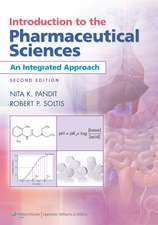Polycyclic Hydrocarbons: Volume 2
Autor Eric Claren Limba Engleză Paperback – 2 oct 2013
| Toate formatele și edițiile | Preț | Express |
|---|---|---|
| Paperback (2) | 723.05 lei 6-8 săpt. | |
| Springer Berlin, Heidelberg – 20 noi 2013 | 723.05 lei 6-8 săpt. | |
| Springer Berlin, Heidelberg – 2 oct 2013 | 1103.39 lei 6-8 săpt. |
Preț: 1103.39 lei
Preț vechi: 1161.47 lei
-5% Nou
Puncte Express: 1655
Preț estimativ în valută:
211.16€ • 219.64$ • 174.32£
211.16€ • 219.64$ • 174.32£
Carte tipărită la comandă
Livrare economică 12-26 aprilie
Preluare comenzi: 021 569.72.76
Specificații
ISBN-13: 9783662016701
ISBN-10: 3662016702
Pagini: 548
Ilustrații: LVII, 487 p.
Dimensiuni: 148 x 210 x 29 mm
Greutate: 0.64 kg
Ediția:Softcover reprint of the original 1st ed. 1964
Editura: Springer Berlin, Heidelberg
Colecția Springer
Locul publicării:Berlin, Heidelberg, Germany
ISBN-10: 3662016702
Pagini: 548
Ilustrații: LVII, 487 p.
Dimensiuni: 148 x 210 x 29 mm
Greutate: 0.64 kg
Ediția:Softcover reprint of the original 1st ed. 1964
Editura: Springer Berlin, Heidelberg
Colecția Springer
Locul publicării:Berlin, Heidelberg, Germany
Public țintă
ResearchDescriere
Polycyclic hydrocarbons are of interest in many fields of science: theoretical chemistry, physical chemistry, organic chemistry, dyestuff chemistry and biology. With regards to the latter, I am indebted to Dr. Regina Schoental of the Medical Research Council for the review in this present work of carcinogenesis by polycyclic hydrocarbons. This book is designed to present the facts in a simple and clear order and to derive empirical rules from them, but it does not present a com prehensive theory about polycyclic hydrocarbons. An attempt is made instead to extend classical symbolism into modern structural chemistry. Thus extensive use is made of Robinson's aromatic sextet, which is applied in an uncompromising and strict way. This quasi-classical attempt is encouraged further by such completely unexpected dis coveries as those of Dewar benzene and of the electronic asymmetry of formally symmetric hydrocarbons. How difficult it is to break away from any established way of thinking has been admirably expressed by Kekule ("Organische Chemie", 1861, Part 1, page 4, translated from German): "All our ideas are based, to an extent much greater than we ordinarily believe, on those of our predecessors. Our accumulated experience, the notions of which our training has accustomed us to, of whatever kind they have been, influence the course of our thoughts far more than we are willing to admit; only too frequently the following of our regularly used, well trodden way of thinking leads to us overlook the simplest of correlations.
Cuprins
III peri-Condensed Hydrocarbons consisting only of Six-membered Rings and derived from Fundamental Systems with Two Benzenoid Rings.- 28. Hydrocarbons derived from Diphenyl.- 29. Hydrocarbons derived from Perylene.- 30. Hydrocarbons derived from Bisanthene.- 31. Hydrocarbons derived from Pyrene.- 32. Hydrocarbons derived from Anthanthrene.- 33. Hydrocarbons derived from p-Terphenyl.- 34. Hydrocarbons derived from Terrylene.- 35 Hydrocarbons derived from 2.3-peri-Naphthylenepyrene.- 36. Hydrocarbons derived from Peropyrene.- V peri-Condensed Hydrocarbons consisting only of Six-membered. Rings and Derived from Fundamental Systems with Four Benzenoid Rings.- 37. Hydrocarbons derived from Quaterphenyl.- 38. Hydrocarbons derived from Quaterrylene.- 39. Hydrocarbons derived from 2.3,7.8-Di-(peri-naphthylene)-pyrene.- VI peri-Condensed Hydrocarbons consisting only of Six-membered Rings and Derived from Fundamental Systems with Five and Six Benzenoid Rings.- 40: Quinquiphenyl and Sexiphenyl.- VII peri-Condensed Hydrocarbons consisting of Six- and Five-membered Rings in which no Carbon Atom Is Linked with more than One Hydrogen Atom.- 41. Hydrocarbons containing one Five-membered Ring.- 42. Hydrocarbons containing Two Five-membered Rings.- 43. Hydrocarbons containing Three Five-membered Rings.- 44. Hydrocarbons containing four Five-membered Rings.- VIII peri-Condensed Hydrocarbons consisting of Six-membered Rings in which One Carbon Atom Is Linked with Two Hydrogen Atoms.- 45.- IX peri-Condensed Hydrocarbons consisting of Six-membered Rings in which Two Carbon Atoms Are Linked with Two Hydrogen Atoms.- 46.- X Hydrocarbons consisting of Six-membered Rings which have Formally Fixed Double Bonds.- 47.- XI Hydrocarbons consisting of Five- and Six-membered Rings which Have Formally Fixed Double Bonds.- 48.- Author Index.







